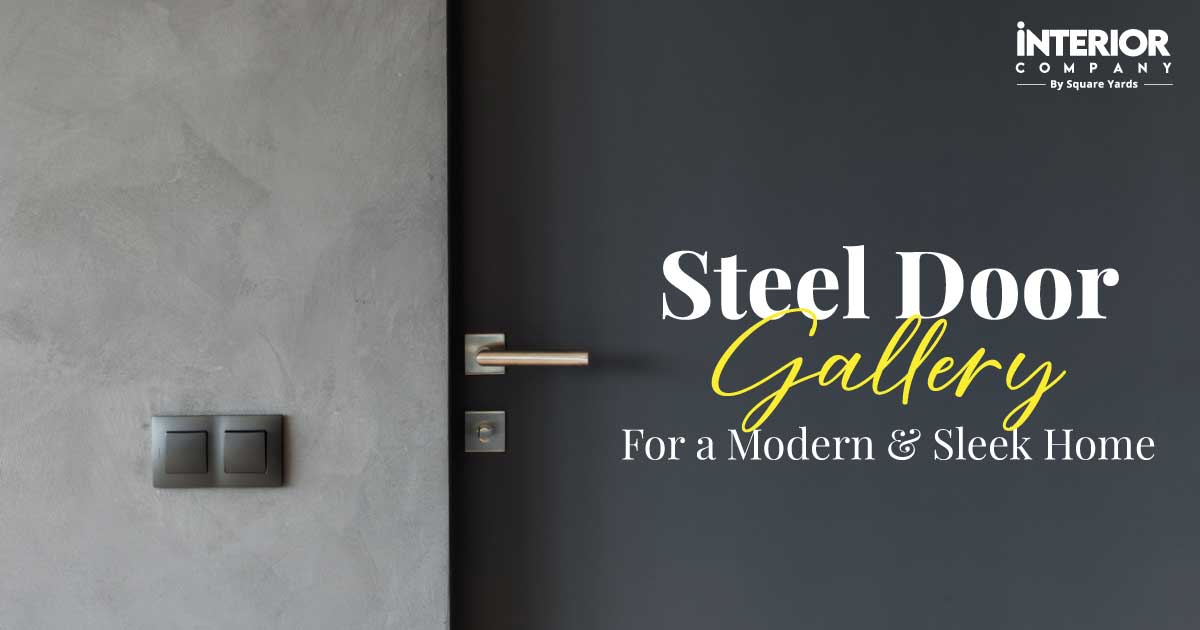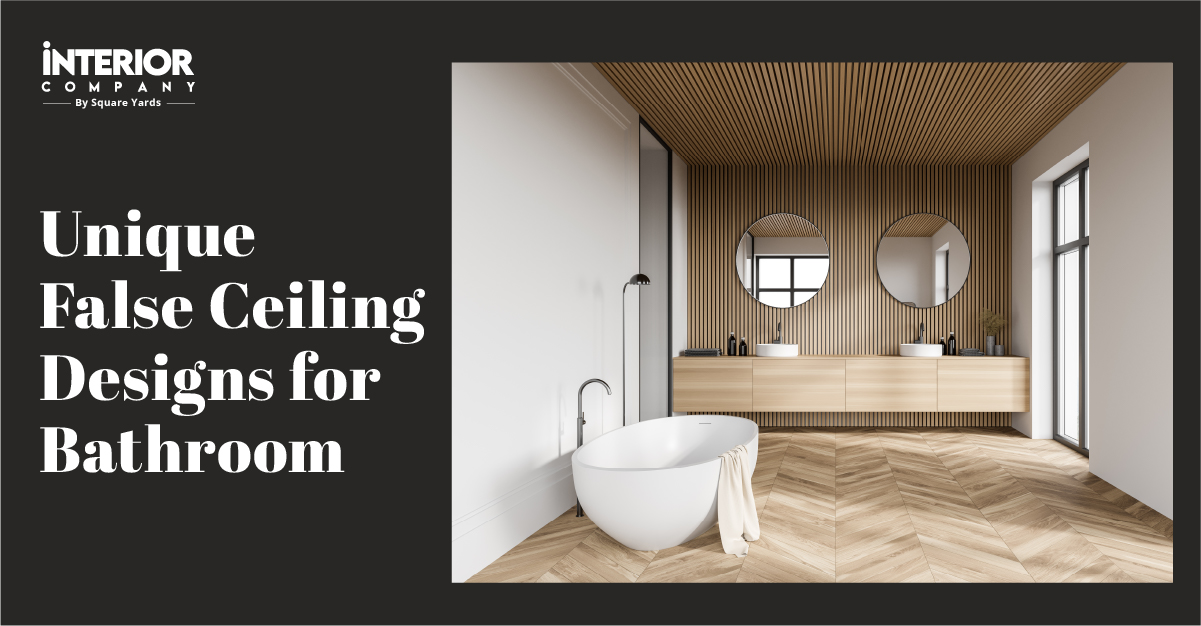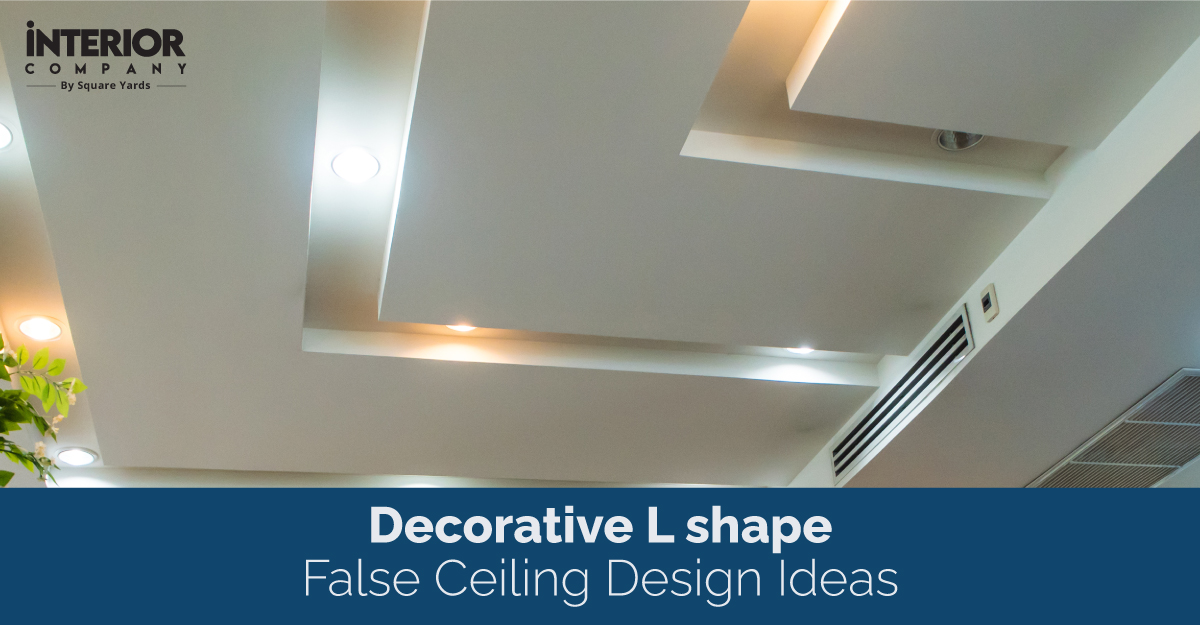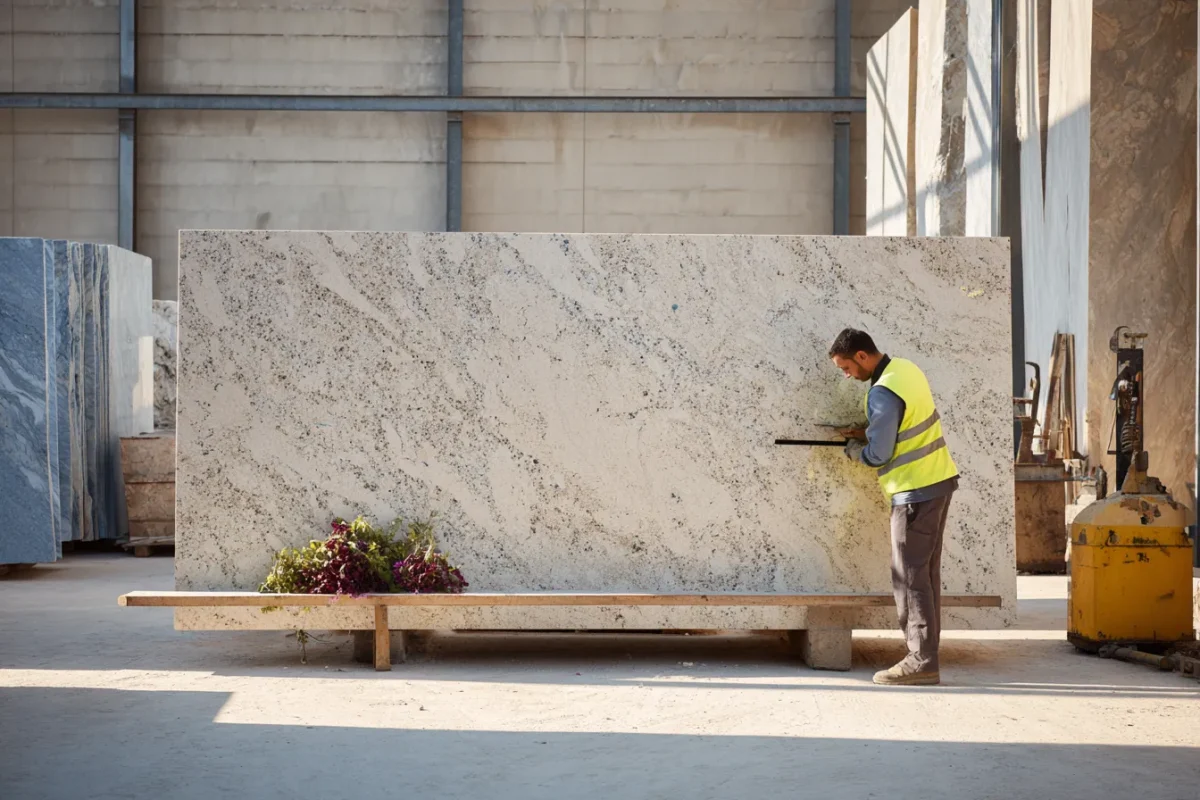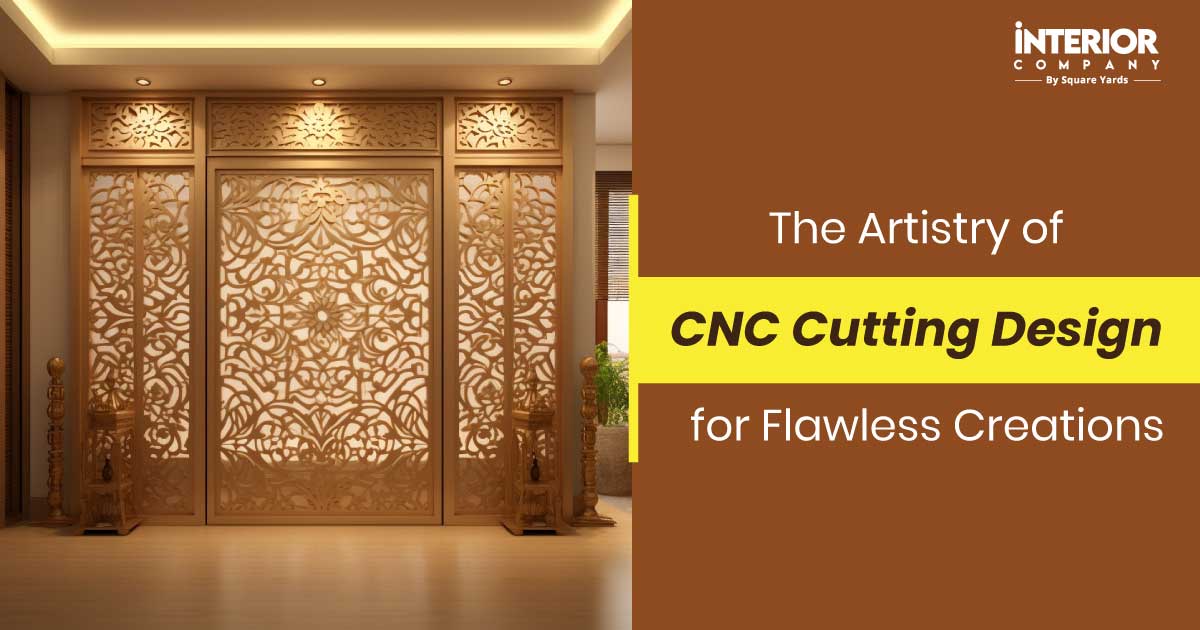- Kitchens
- Design Ideas
- Cities
- Trends
- Guides
- Price Calculators
- Our PortfolioNEW
- More
Bathtub Guide: Key Considerations for Choosing Your Perfect Soak Spot
Bathtubs are the plush fixtures in bathroom design and often sit at the centre of the space, making a grand statement. Whether it’s the standout design, alcove style or clawfoot tub, it transforms the ambience while delivering true luxury. If you’re undergoing a bathroom remodel or planning to buy a new tub for your bijou space, consider this descriptive guide, curated by our experts, before purchasing. Make the right choice that harmonises with your bathroom space constraints, personal style and bathing habits.
Table of Content
Bathtub Options
Below are the popular types of bathtubs, including freestanding, built-in and back-to-wall, alcove, and drop-in:-
Freestanding Bathtubs
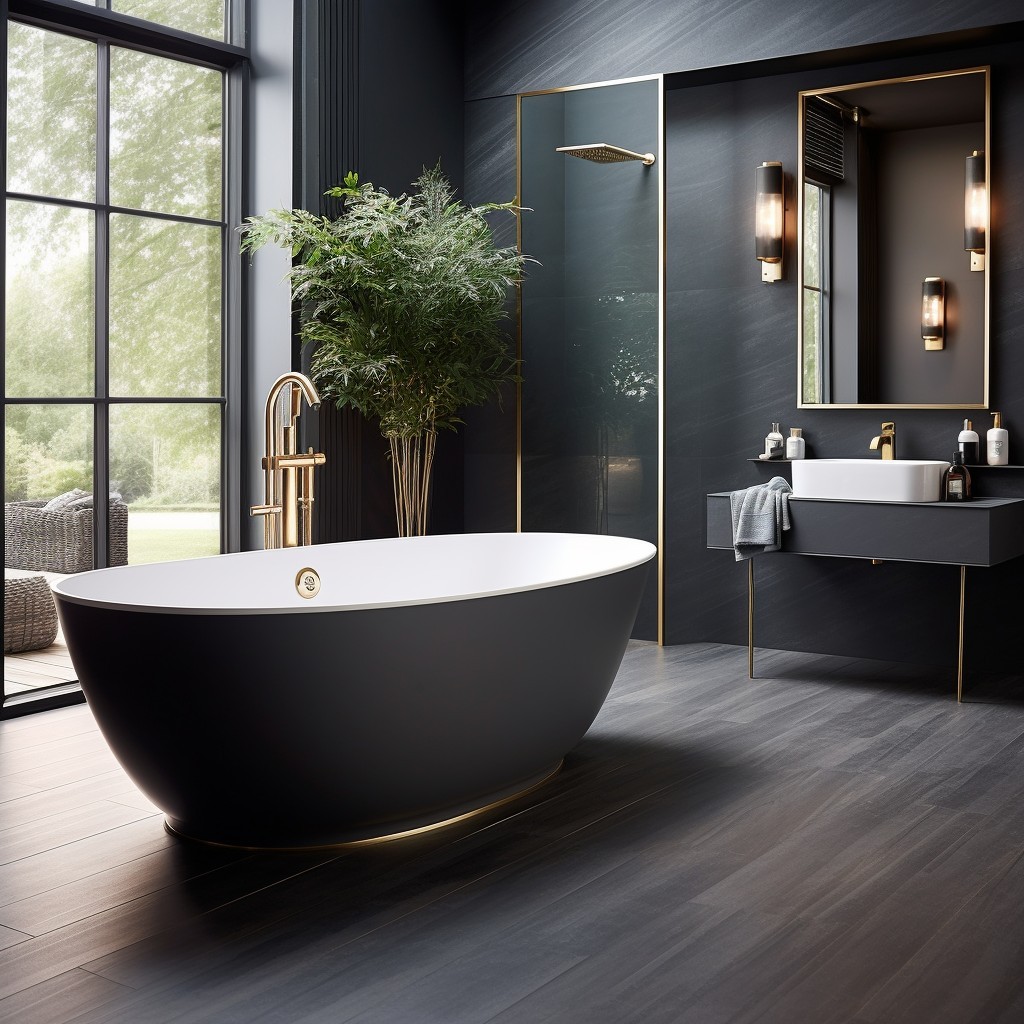
The epitome of luxury and style, freestanding bathtubs can be a statement piece in your bathroom. Because of their design, they offer more flexibility, come in a range of styles and promise a spacious bathing experience. These bathtubs come in sleek, minimalist, antique and contemporary designs and are installed with the latest materials and innovations, matching the aesthetics of the space. However, the only downside is that they may require more floor space and can be more challenging to install the plumbing.
Clawfoot
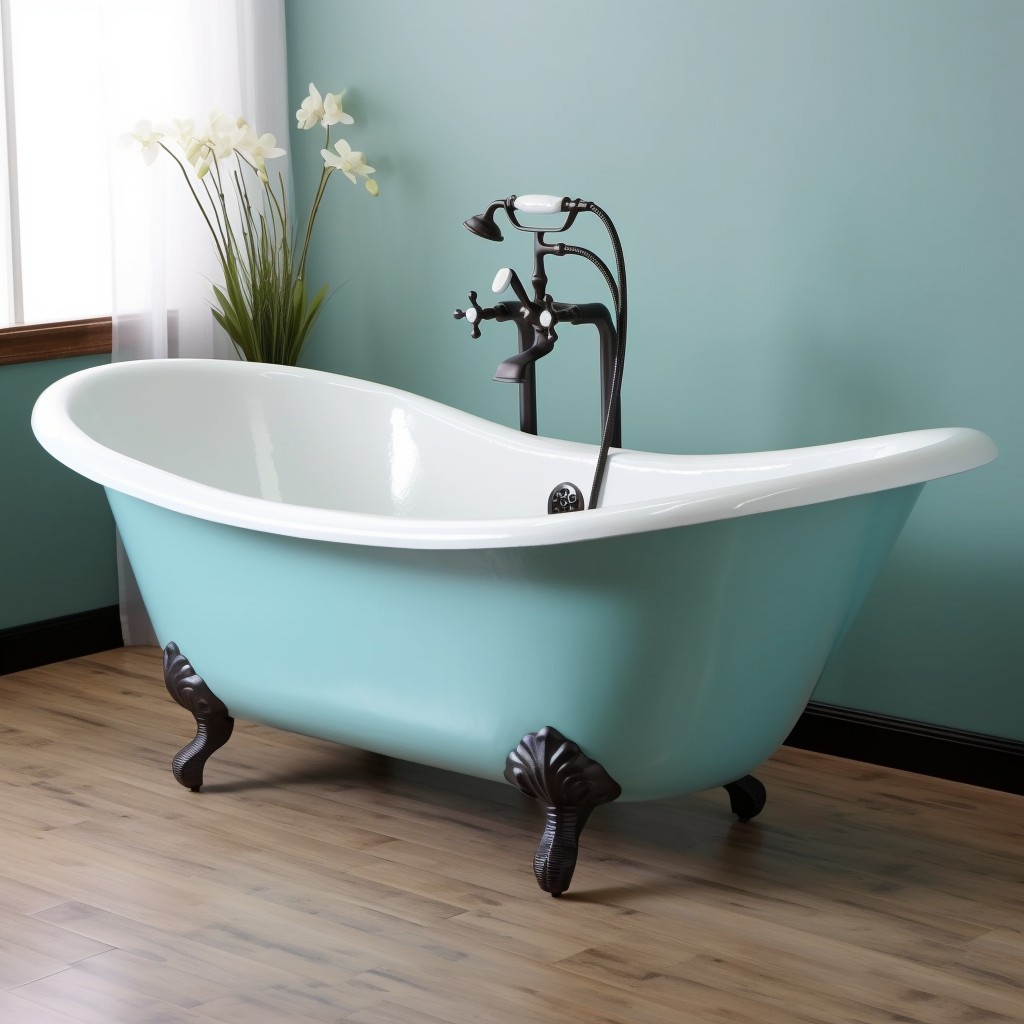
Fans of classic bathtub designs can go for clawfoot tubs with cast iron feet that elevate the whole ambience of the space.
Alcove Bathtubs
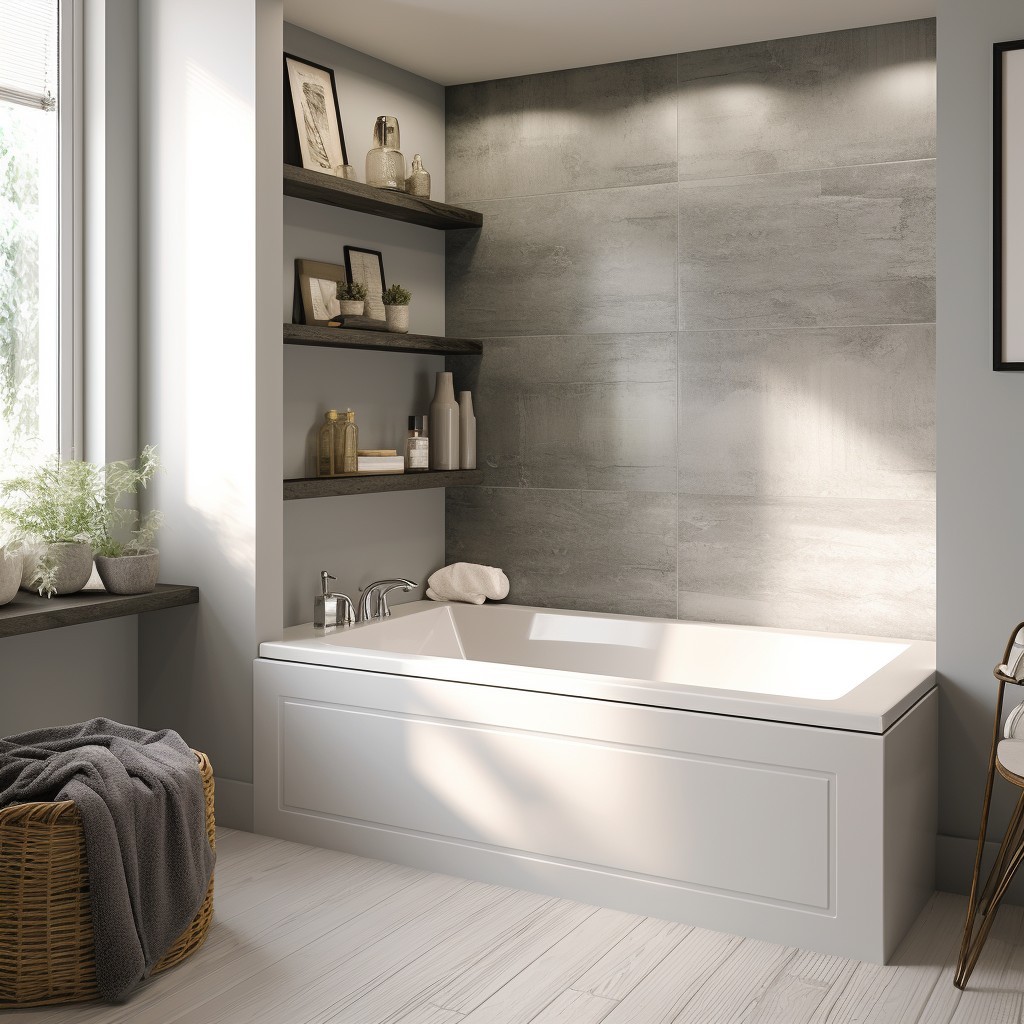
Commonly known as recessed or built-in bathtubs, alcove bathtubs are a great fit for smaller spaces and are installed with a three-sided enclosure. Homeowners choose this bathtub design to save space and give a luxurious feel when clad in marble, stone resin, or contemporary wood panels. The best part about these bathtubs is they are cost-effective and allow for more customisation with wall surroundings while offering a space-saving choice.
You may also like!
| Laundry Room Design | Modern Laundry Room Desig Ideas You will Love |
| Bathroom Door Designs | Simple Bathroom Door Designs for Homes |
| Bathroom Lighting Ideas | Best Bathroom Lighting Ideas to Brighten Your Space |
| Wash Basin Design | Modern Wash Basin Designs to Upgrade Your Bathroom |
Back-To-Wall Bathtubs
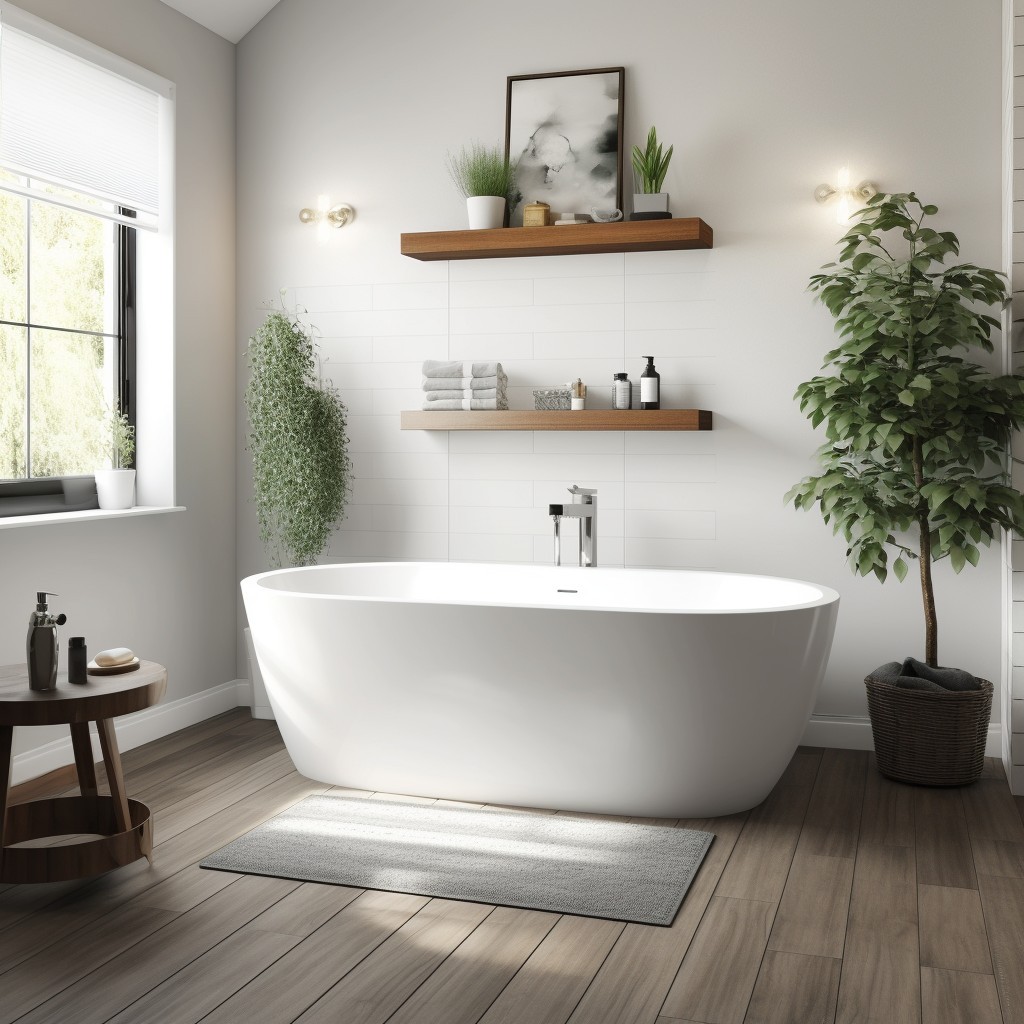
This modern bathtub design combines elements of freestanding and built-in models. It is placed against a wall for support but has a finished aesthetic appeal like a freestanding tub. These hybrid models are compact and functional, offering more convenience and space-saving benefits of a built-in. However, like freestanding tubs, they might lack ledge space for toiletries and accessories.
Drop-In Bathtubs
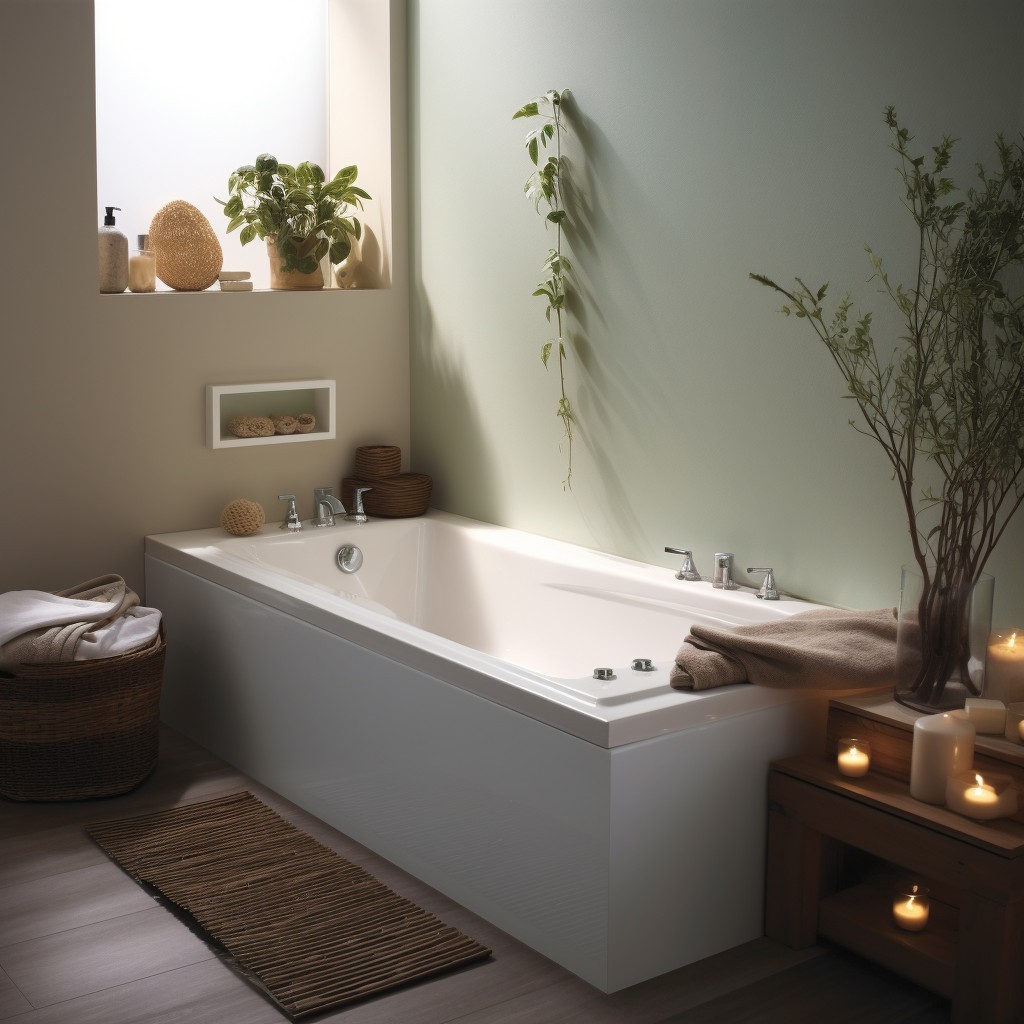
Drop-in bathtubs are designed within a framed enclosure and offer tons of style and customisation choices, creating an integrated look. The versatility of drop-in tubs is they can be installed in an alcove or a corner bathtub design. In addition, they allow for creative freedom as they can be encased in various materials, such as acrylic, tile, stone resin, or wood. On the downside, they take up more space, plus the installation and custom-built design can be costly.
Shower-Bath Combination
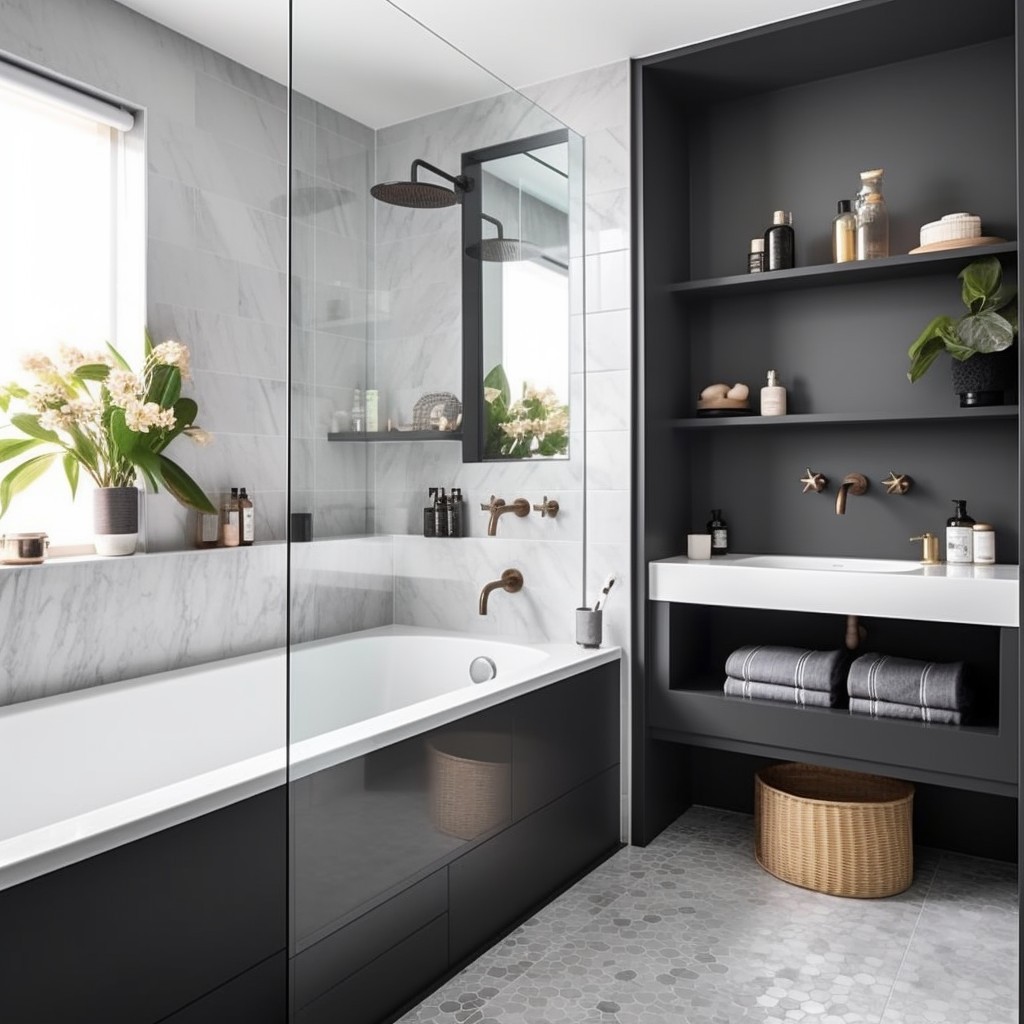
A perfect combination of bringing functionality and aesthetics into a smaller space is choosing a bath and screened shower area in one. This bathtub design delivers luxury bathing, the flavour of alcove-style, freestanding and the versatility of an exquisite shower all in one. Add clear glass to instil privacy and style, fusing with your bathroom's scheme.
What Should be the Bathtub Shape?

Bathtub styles come in various shapes and are important for comfort and practicality. Curvaceous baths offer a striking contrast to straight bathrooms and are suited for small spaces as they take less space visually. However square and rectangle designs offer a more contemporary feel but look bulkier and require large space. Also, consider the bathtub's silhouette, your height and depth to enhance the bathing experience.
Consider Bathtub Design Size
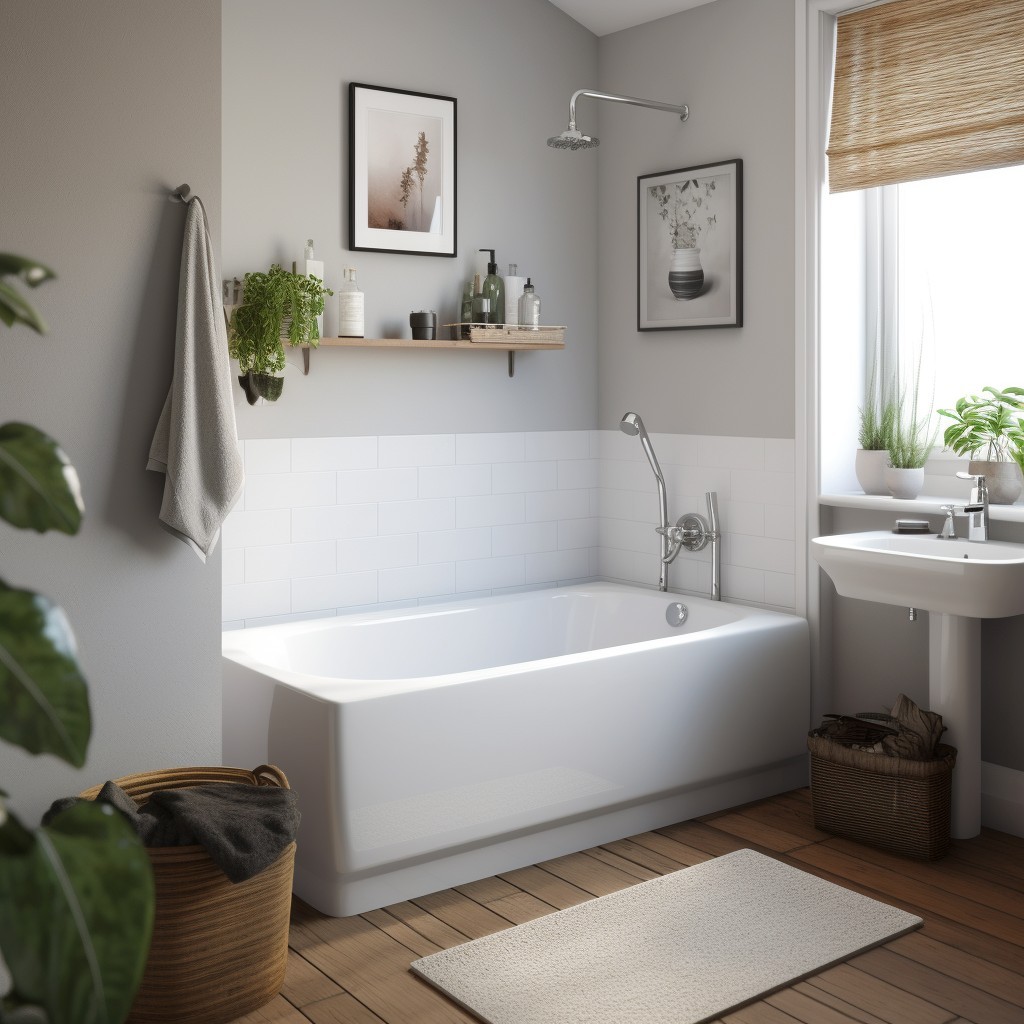
When considering size, focus on the bathroom shape, dimensions and the intended purpose. An ideal bathtub size is 5ft long, 2½ ft wide and 1ft tall. However, the compact bathtub design is under 5ft, and larger options go up to 6½ft in length, so choose according to the desired style, size and comfort. Smaller bathtubs are more practical and cost-friendly choices for compact spaces, bringing utility and style together.
Types of Bathtub Materials
In addition to the design and style choices, materials also affect the appearance and durability of the bathtubs.
Fibreglass
One of the most economical and flexible tub materials is fibreglass, but offers less durability and is prone to scratches and discolouration.
Porcelain-Enamelled Steel
If you love long soaks in the bath, good news- these bathtub designs retain heat for longer and come in distinct finishes and colours. Moreover, it is durable and easy to clean, offering a glossy finish.
Stone Resin
Stone bathtubs, such as marble, granite and travertine provide strength and good heat retention. Mostly seen in freestanding baths, it adds texture and natural beauty to the bathroom, accentuating the aesthetics.
Cast Iron
The most sturdy and long-lasting tub material that has been from the ages. These bathtub types are highly scratch-resistant and offer a low chance of staining or damage.
Acrylic
The most common, non-porous, lightweight, and scratch-resistant material is also susceptible to warping and is non-biodegradable.
Copper
Currently, the favourite material of the designers that can instantly glam up the space is copper tubs. For those who want to add a pop of colour and plush look to your bathroom. However, copper tubs typically have a high price tag and are difficult to find.
Think about the Bathtub Finish
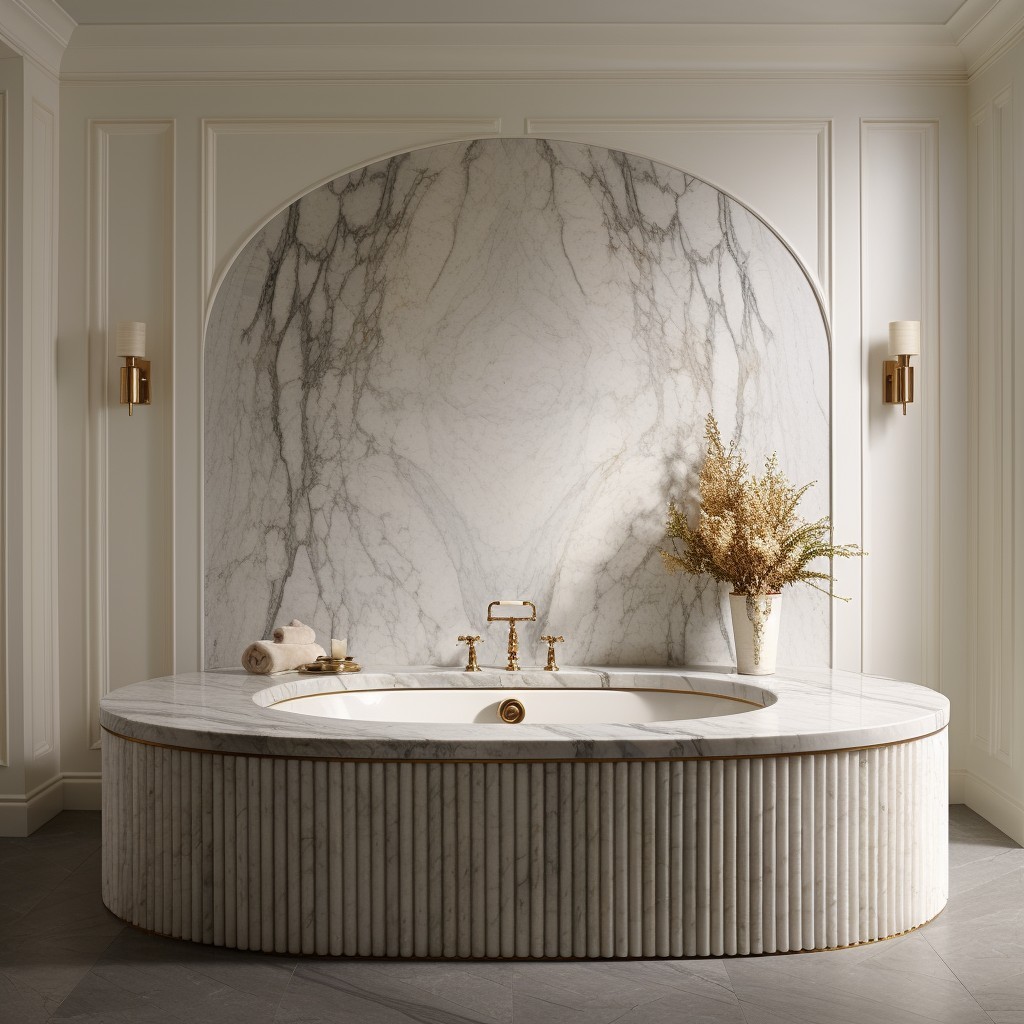
Whatever the material you choose, consider the finish of the bathtub that adds a style quotient to the space. Glossy to a matte finish, tiling and bespoke cladding, the choices are endless. If you want a contemporary look and hide water spots, go for a matte finish, while textured styles invite tactility and visual interest to the space. Another stylish bathtub choice is fluted designs that are stain-resistant with a high-gloss finish and become the centrepiece of your space.
Choose a Colour Option for Bathtub
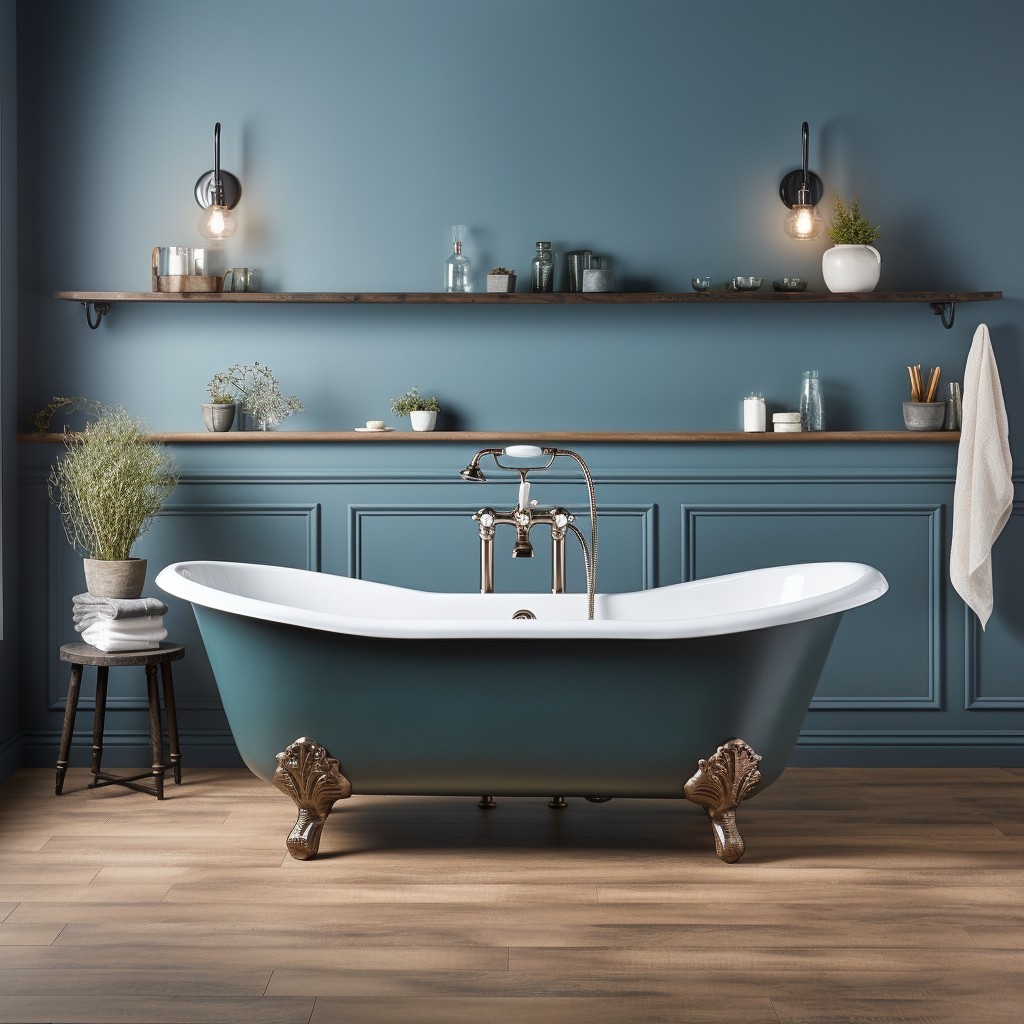
While white baths are versatile and timeless choices, the colour of your bathtub design can significantly influence the environment of your bathroom ideas. Choose a colour you love and set the room's tone, while making a bold statement or harmonising with your design theme. The shades of grey and green create a modern look, and pastel hues give a spa-like atmosphere. Ensure your bath material, finish and colour align with your style preferences and bathroom faucets.
The Position Of The Bathtub In The Room
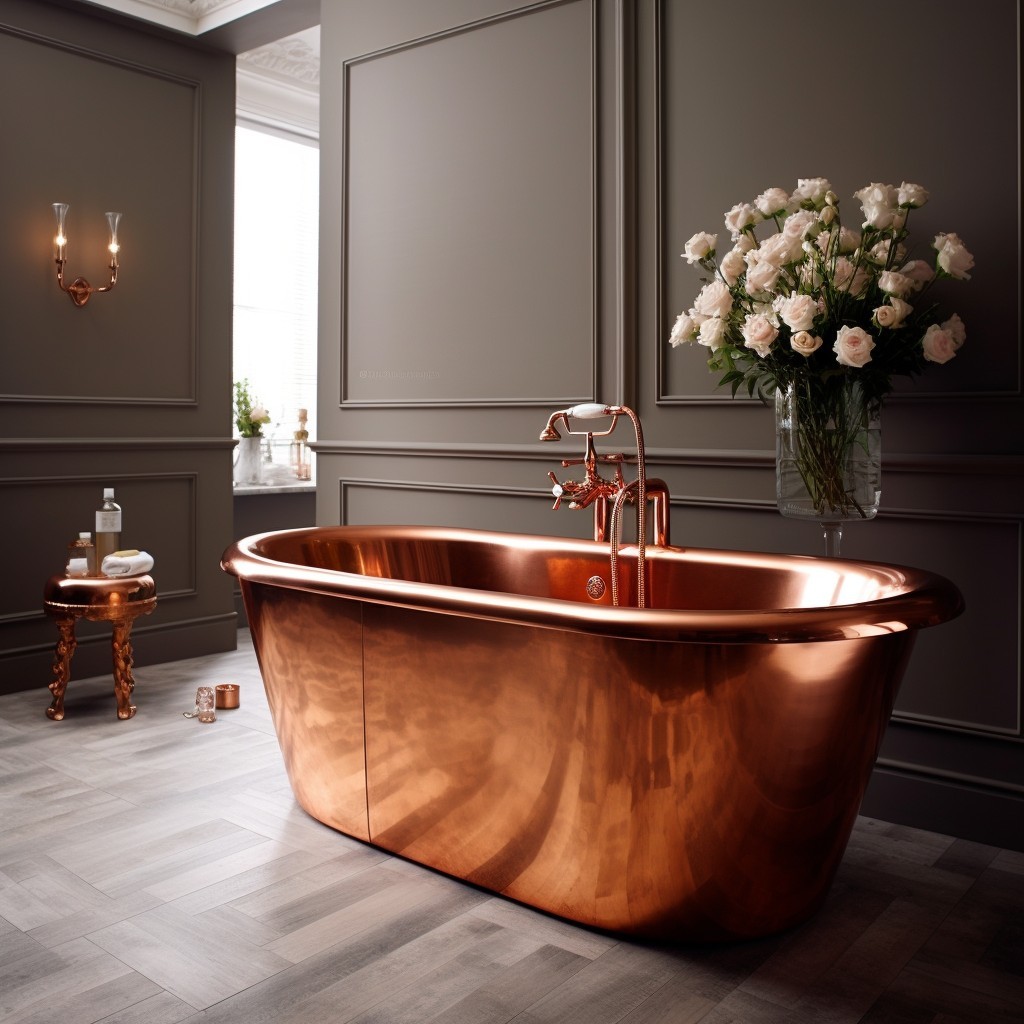
After finalising the bathtub type, colour, and material, consider your bathtub's position affecting its functionality and aesthetics. The size and shape of your bathroom determine the ideal location for the bath. A centrally placed freestanding tub can make an elegant statement, while an alcove tub is a practical solution for small bathroom designs. Consider the door, window, the impact of natural light and outside views from the tub before setting up to enjoy a long soak. Additionally, provide enough clearance around the tub for easy movement and safety.
You may also like!
| Bathroom Renovation Ideas | Creative Modern Bathroom Interior Design Ideas |
| Small Bathroom Ideas | Budget-Friendly Small Bathroom Design Ideas |
| Types of Showers | Choose the Right Types of Modern Bathroom Showers |
| Utility Area Designs | Creative Utility Room Interior Designs for Your Home |
In A Nutshell
Each of the bathtub designs has a unique set of advantages and challenges. While selecting the desired bathtub, factors like bathroom layout, functionality, colour and style, materials, finishes, and budget play a crucial role. Select a suitable choice that endures comfort and relaxation plus caters to your needs.
For more inspiring bathroom designs, Connect to our experts at Interior Company, curating designs with on-trend ideas that suit your taste and space.
*Images used are for illustration purposes only. Interior Company does not hold any copyright to the images unless mentioned explicitly.
Bathroom Design Ideas for You
- Color
- Theme
- Size
- Vanity Color
- Shower Type
- Bathtub
- Wall Color
- Counter Colour
- Wall Tile Material
- Floor Material
- Number of Sinks
- Beige Color Bathroom
- Black Color Bathroom
- Blue Color Bathroom
- Brown Color Bathroom
- Gold Color Bathroom
- Green Color Bathroom
- Grey Color Bathroom
- Ivory Color Bathroom
- Light Beige Color Bathroom
- Mint Green Color Bathroom
- Multi-Colour Color Bathroom
- Multicolour Color Bathroom
- Mustard Color Bathroom
- Natural Brown Color Bathroom
- Navy Blue Color Bathroom
- Neutral Color Bathroom
- Off White Color Bathroom
- Olive Green Color Bathroom
- Orange Color Bathroom
- Peach Color Bathroom
- Pink Color Bathroom
- Pista Green Color Bathroom
- Purple Color Bathroom
- Royal Blue Color Bathroom
- Teal Color Bathroom
- Terracotta Color Bathroom
- White Color Bathroom
- Wooden Brown Color Bathroom
- Yellow Color Bathroom
- All Cabinet Finishes Vanity Color Bathroom
- Beige Vanity Color Bathroom
- Black Vanity Color Bathroom
- Blue Vanity Color Bathroom
- Brown Vanity Color Bathroom
- Dark Wood Vanity Color Bathroom
- Gray Vanity Color Bathroom
- Green Vanity Color Bathroom
- Light Wood Vanity Color Bathroom
- Medium Wood Vanity Color Bathroom
- White Vanity Color Bathroom
- Cement Tile Wall Tile Material Bathroom
- Ceramic Tile Wall Tile Material Bathroom
- Glass Sheet Wall Tile Material Bathroom
- Glass Tile Wall Tile Material Bathroom
- Limestone Wall Tile Material Bathroom
- Marble Wall Tile Material Bathroom
- Matchstick Tile Wall Tile Material Bathroom
- Mosaic Tile Wall Tile Material Bathroom
- Porcelain Tile Wall Tile Material Bathroom
- Slate Wall Tile Material Bathroom
- Stone Slab Wall Tile Material Bathroom
- Stone Tile Wall Tile Material Bathroom
- Subway Tile Wall Tile Material Bathroom
- Terra-Cotta Tile Wall Tile Material Bathroom
- Travertine Wall Tile Material Bathroom
- Wood-Look Tile Wall Tile Material Bathroom
- Cement Tile Floor Material Bathroom
- Ceramic Tile Floor Material Bathroom
- Concrete Floor Material Bathroom
- Dark Hardwood Floor Material Bathroom
- Light Hardwood Floor Material Bathroom
- Limestone Floor Material Bathroom
- Marble Floor Material Bathroom
- Medium Hardwood Floor Material Bathroom
- Mosaic Tile Floor Material Bathroom
- Pebble Tile Floor Material Bathroom
- Plywood Floor Material Bathroom
- Porcelain Tile Floor Material Bathroom
- Slate Floor Material Bathroom
- Terrazzo Floor Material Bathroom
- Travertine Floor Material Bathroom
Ready for a home transformation?
Let our designers assist you!
Recent Posts
No matter the aesthetic style, a cast iron bathtub is a sturdy one that is resistant to scratches and dents and lasts longevity.
A bathtub focuses more on bathing and cleaning, whereas a soaker tub helps you to soak deeply in water and relax your muscles.
Acrylic bathtub is a better alternative, a more cost-effective choice and resists general wear and tear longer than fibreglass. Fibreglass is prone to scratching and cracking and fades more quickly than acrylic.
Related Category
- Door Design
- False Ceilings
- Materials
- Paint and Color
- Tips and Advice












